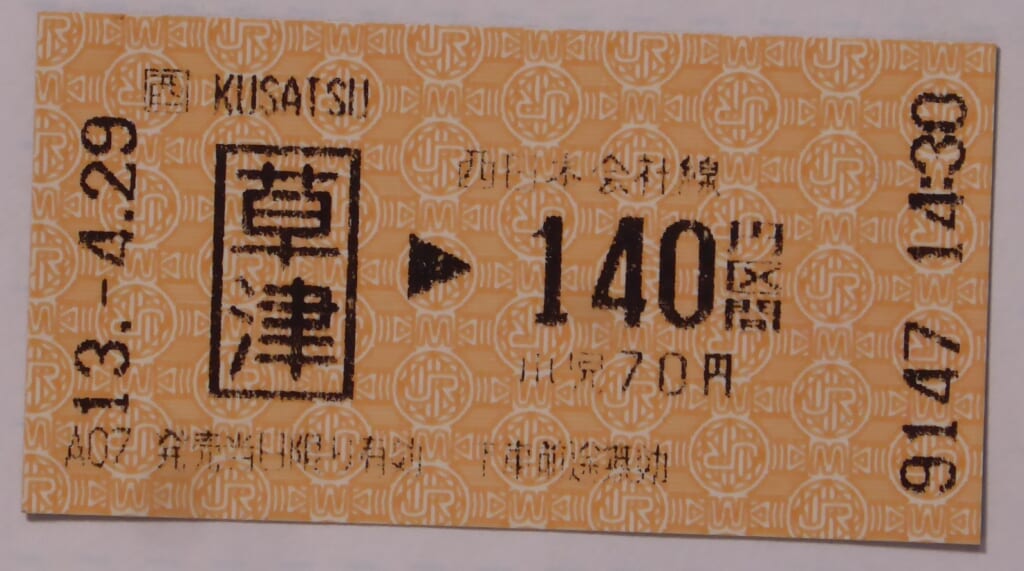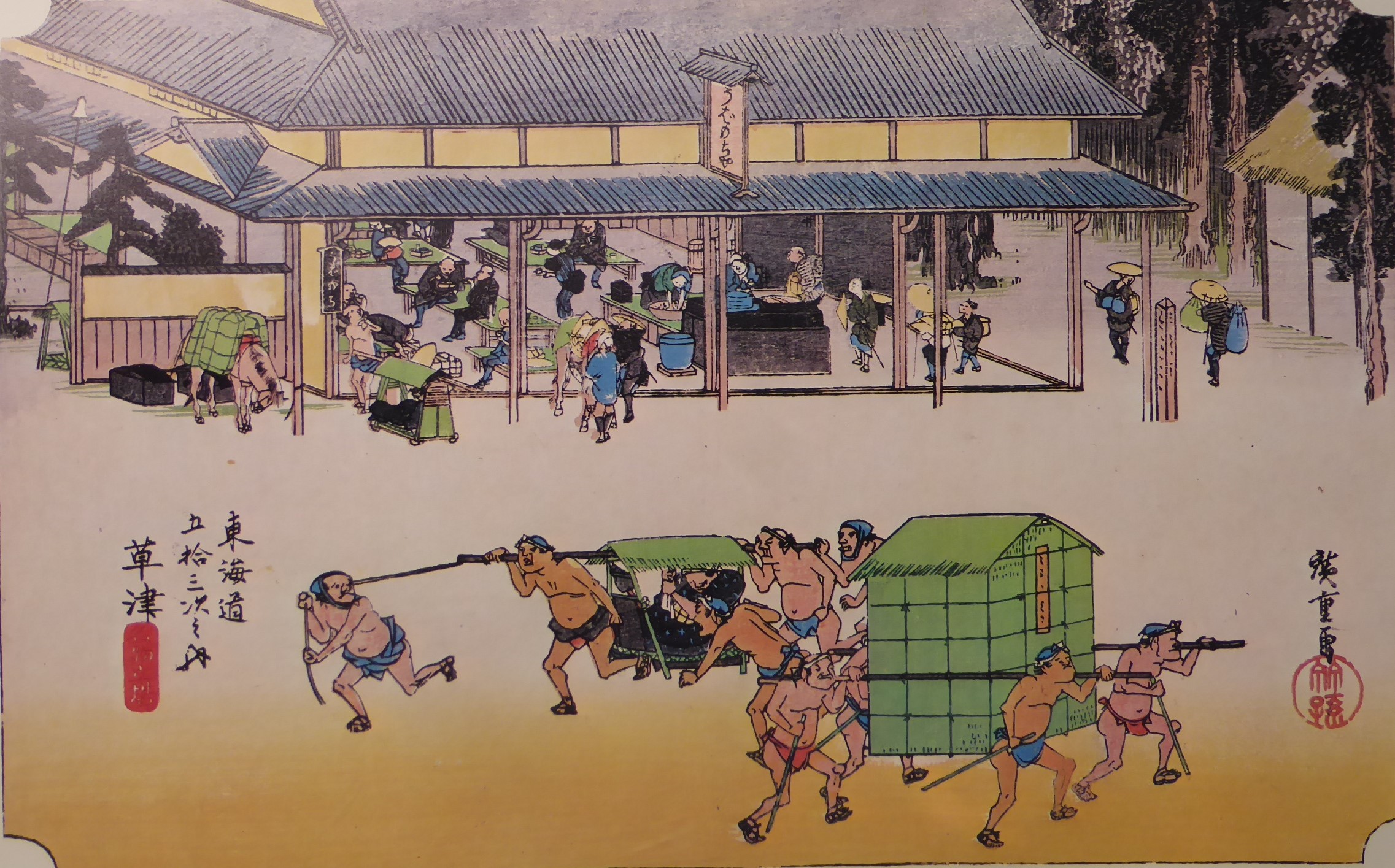Explanation of the 53 Stations of the Tokaido 53 Kusatsu
Latitude 35° 01′ 03.6″ N 135° 57′ 37.7″ E
14.4 km from Otsu
Kusatsu-juku is located in the city of Kusatsu, Shiga Prefecture, where the Nakasendo road joins.
The main building still exists and is designated as a national historic site.
It was the turning point between the Tokaido and Kisokaido roads, and was also a key transportation point for Lake Biwa.
It flourished as one of the leading inn stations.
① “Hoeido version”
The famous “Ubaga Mochiya” was located at the corner of Yabase Minato on the outskirts of town.
It was also an important place for trading products produced around the large Lake Biwa.
On the highway, a picture of a palanquin running in a hurry is depicted.
Inside the teahouse, there are pictures of people kneading the mochi, carrying it, waiting for it, and eating it.
The road that crosses in front of the teahouse is exactly like the Tokaido, and you can see palanquins and baggage carriers coming and going nonstop.
Ubagamochi is from 1558 to 1570, when the great-grandson of Yoshikata Sasaki, who was destroyed by Oda Nobunaga, was left in the care of his nurse, and to raise her, her nurse opened a mochi shop along the Tokaido road and sold mochi. It is said to have originated from
Eventually, the reputation spread, and the mochi made by the nanny became known as “Ubagamochi” and became a specialty of Kusatsu-juku.
This is the main store of Ubagamochi, a famous confectionery that everyone from Shiga Prefecture is familiar with.
“Ubagamochi” A small cute mochi that even children can eat in one bite.
It’s wrapped in smooth strained bean paste and topped with white bean paste and yam paste. It has a nice texture and a light sweetness.
Currently, 18 pieces of Ubagamochi are sold for 900 yen. Available only locally.
I also received some tea at the store and ate it, and the “Ubagamochi” was very delicious.
A hairy spear is standing at the side entrance. It seems that some daimyo is taking a break.
② “Gyosho version” A pine tree is drawn in the center, and withered pines are drawn on both sides.
➂ “Reisho version” depicts a reed beach, a ship with raised sails, and Mt. Hiei in a haze.
④ “Hokusai Version” This is a work depicting the “Plum Tree Stand” of “Mazano-juku,” a short resting place between Kusatsu-juku and Ishibe-juku.
It depicts a store that sells Wachusan medicine.
“Wanchusan” is a home-use Chinese herbal medicine from the Edo period. The powder was taken for heatstroke, dizziness, colds, etc.
⑤ “Travel Image” A shopping street near Kusatsu Station.
⑥ “Stamp image” JR Kusatsu ticket
Hoeido version
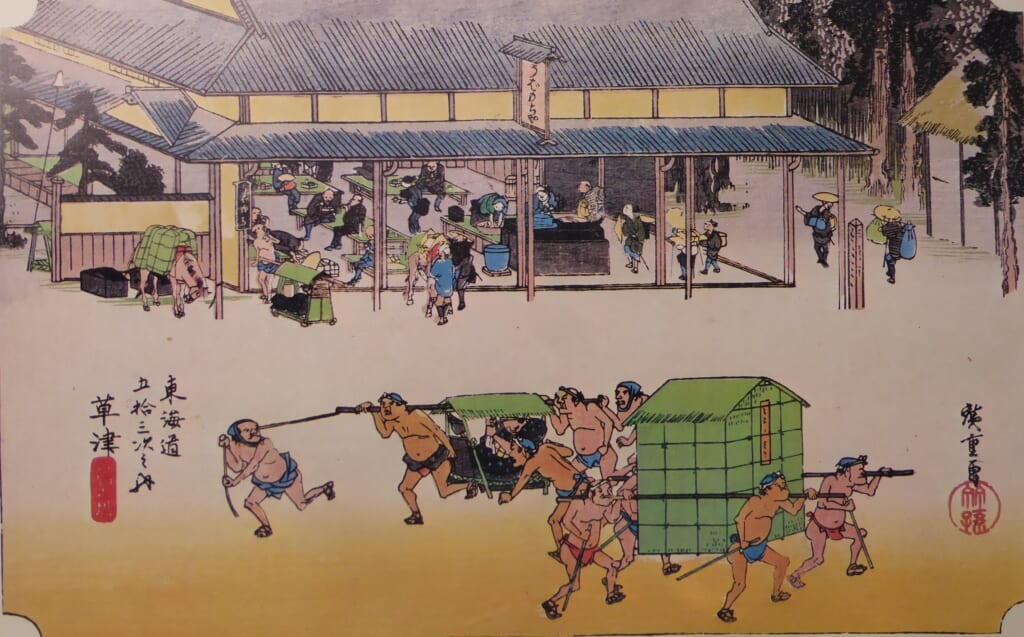
Gyosho version
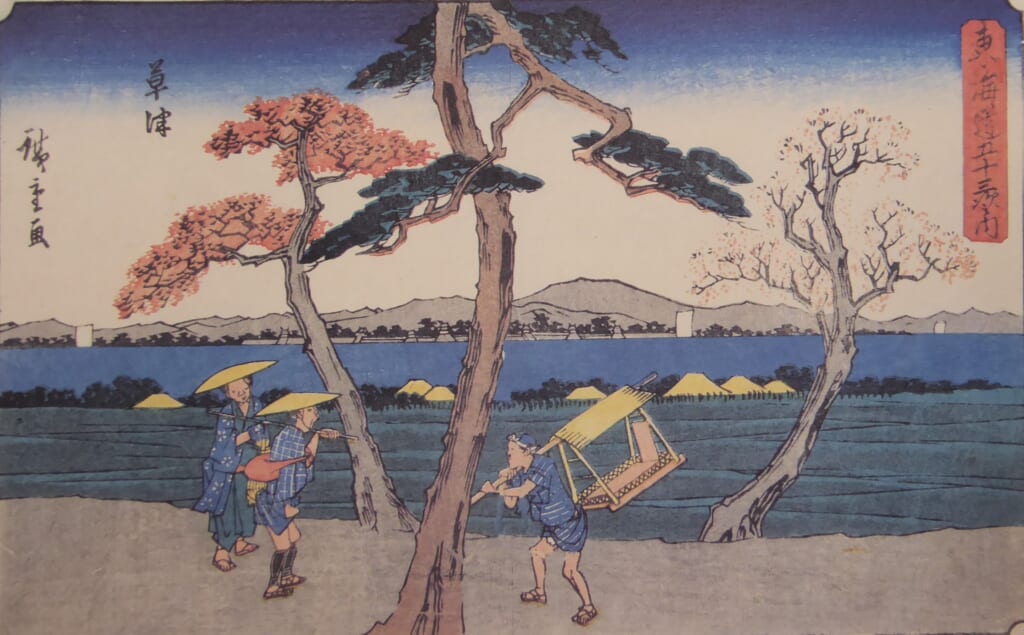
Reisho version
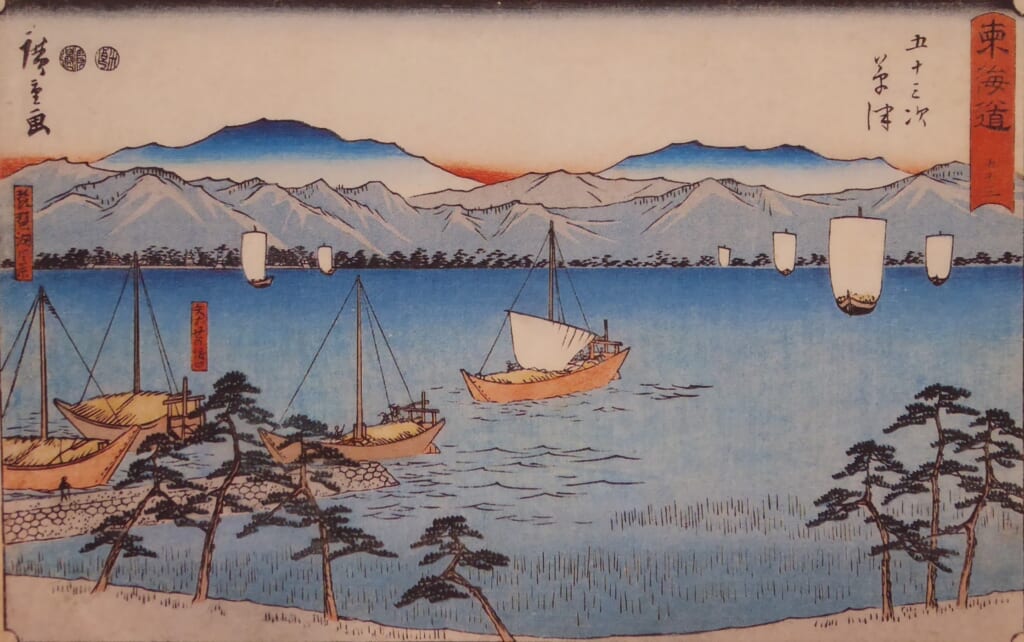
Hokusai Version
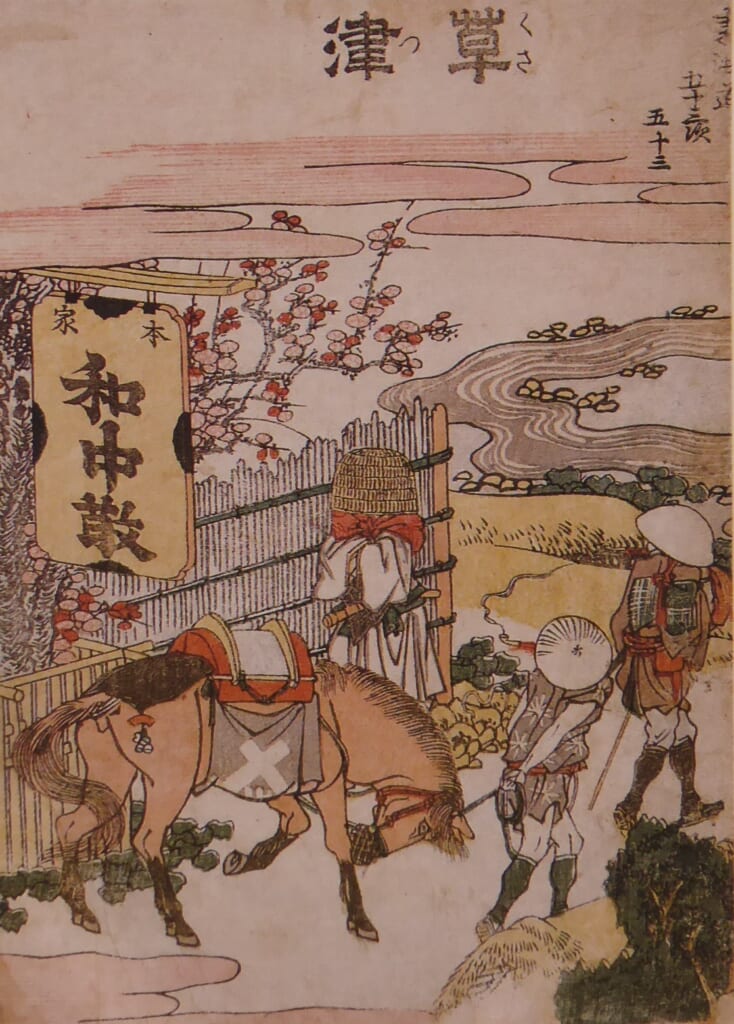
A shopping street near Kusatsu Station
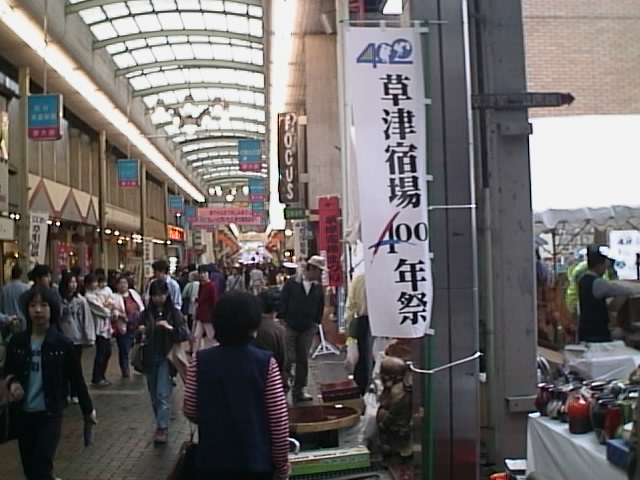
JR Kusatsu ticket
